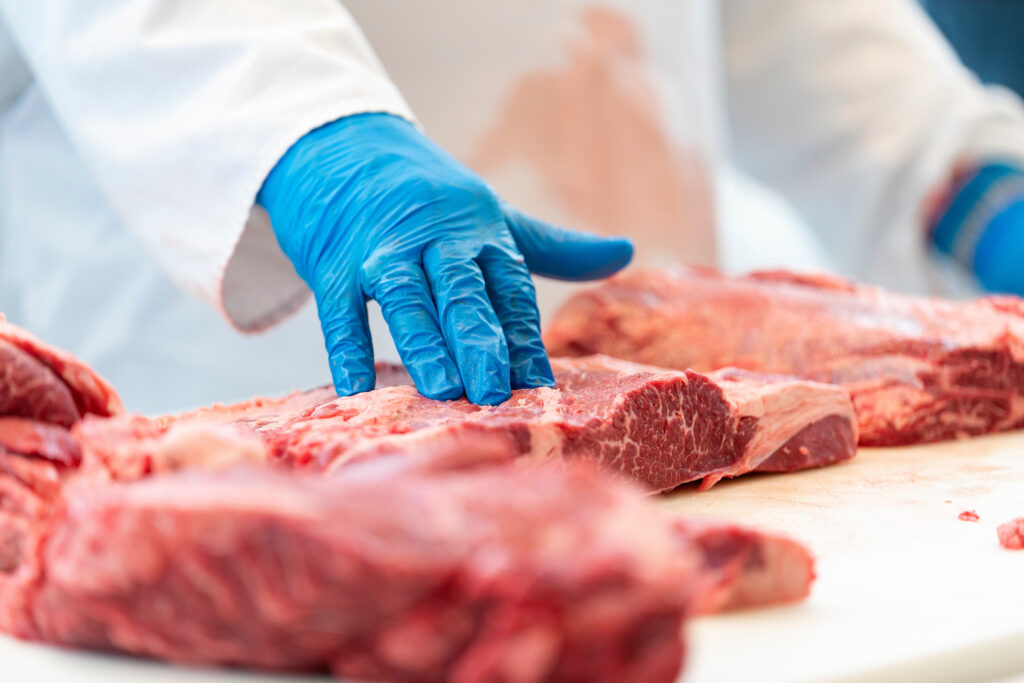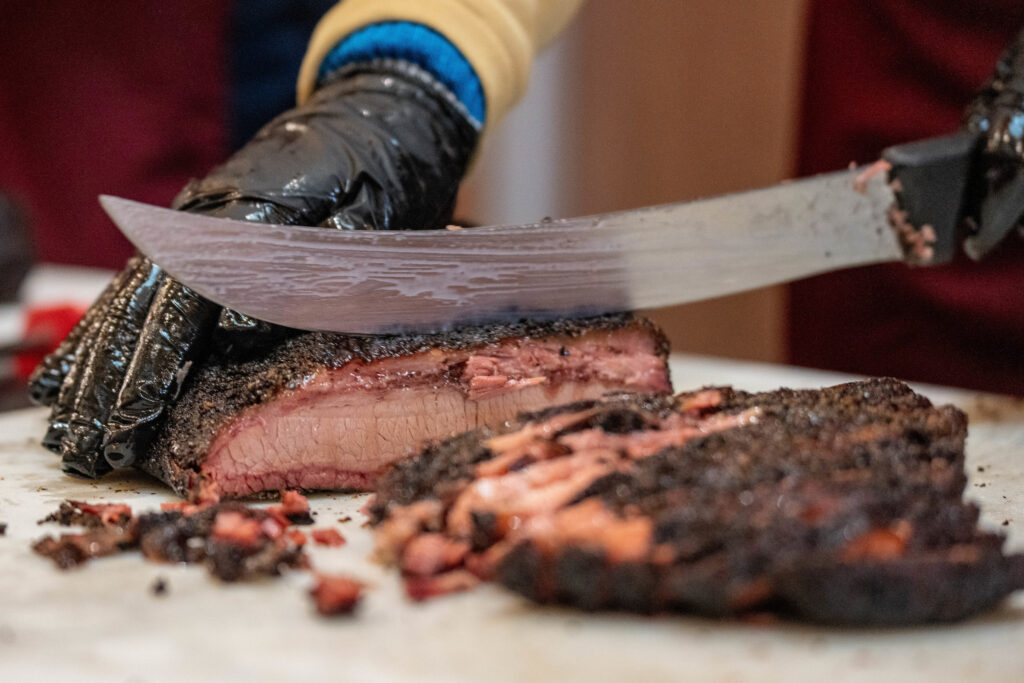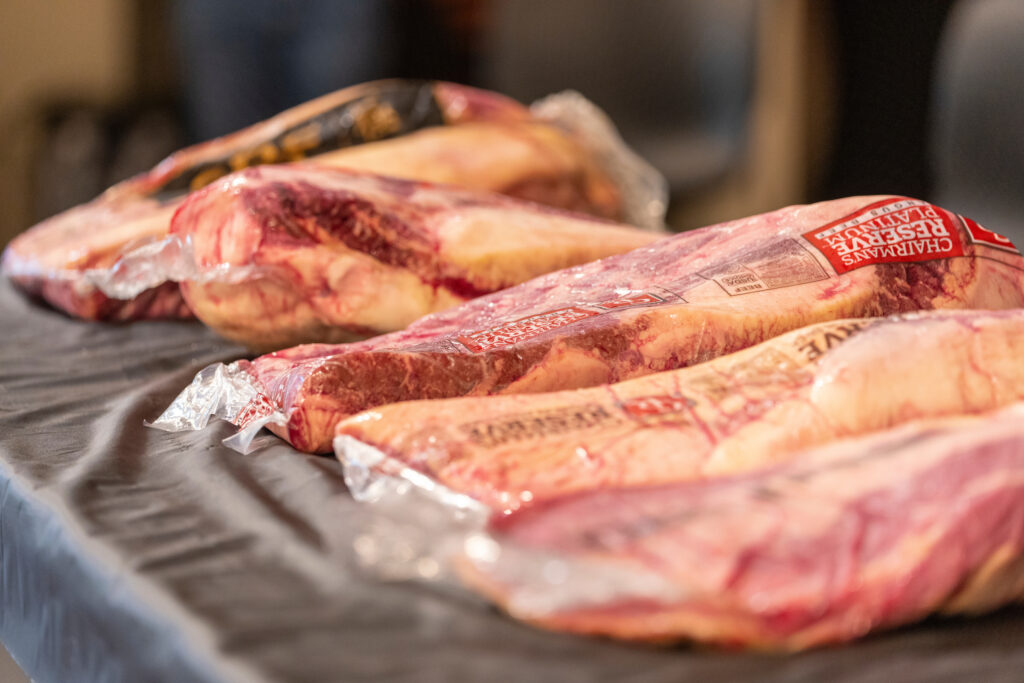Texas A&M meat science expert provides tips to pick out the perfect steak
Choosing the perfect cut of meat for backyard grilling and barbecue needs is no small task.
When selecting beef at the grocery store, shoppers often face decision fatigue from refrigerated shelves stocked top to bottom with different cuts of meat, all classified by varying beef grades.
Beef grades explained
There are eight beef grades, also known as quality grades, and five yield grades. Understanding at least three of these grades is important because they are related to quality traits as well as tenderness, juiciness and flavor that affect a consumer’s eating experience, according to the U.S. Department of Agriculture, USDA.
The most common grades of beef sold in your local grocery store or restaurants include USDA Select, Choice or Prime. Ray Riley, Rosenthal Meat Science and Technology Center manager in the Texas A&M Department of Animal Science, shares tips about what consumers can expect when selecting these common grades.
Beef quality grades are based on maturity or age of the animal, as well as the amount of intramuscular fat or marbling. Basically, as you go from Select to Choice to Prime, consumers should expect satisfaction with their eating experience to increase with each grade.
Beef grades are heavily used to market a product and determine the price of the meat.
“Beef grades help consumers decide what product they want to buy based on the selection between higher and lower quality grades, serving consumers across the board,” Riley said.



There are eight beef grades to choose from but Ray Riley, Rosenthal Meat Science and Technology Center manager in the Texas A&M Department of Animal Science shares tips about what consumers can expect when selecting from three of the common grades. (Laura McKenzie, Courtney Sacco, Michael Miller/Texas A&M AgriLife)
Select grade
After going through a USDA grader, beef that is identified as having a slight amount of marbling in the rib-eye is identified as Select grade beef.
This selection can be a good lean option for consumers, but it also has the potential for much more variation in quality and overall flavor. According to Riley, some select grades eat like Prime or eat like Choice, but that expectation or the probability of that happening is less.
Choice grade
As grades transition up to Choice, consumers can expect to see three different marbling classifications: moderate, modest and small.
Choice beef grades are the primary grade available at supermarkets, Riley said.
“Today’s feedlot cattle are about 11% Prime beef, 72% are Choice, and 13% are Select, so most of the beef that is being fed and going to harvest will fall into the Choice grade,” Riley said.
When it comes to consumers looking to stock up on steaks for their weekend cookout, Choice will often be the go-to because it represents the most options in stores.
Roasts and steaks like filets and rib-eyes are cuts of meat that consumers might buy within this grade for both the amount of marbling and increased taste and juiciness when compared to Select grade.
Prime grade
For consumers looking for the highest amount of marbling, flavor and tenderness, the Prime grade provides a higher probability of getting a quality cut of meat overall.
This grade is classified as having abundant, moderately abundant or slightly abundant amounts of marbling.
Some grocers place Prime cuts on shelves, but many shoppers will need to visit the specialty counter if they want Prime-grade meat. Rib-eye, T-bone and porterhouse steaks are popular and commonly known Prime-graded beef choices that one may eat or order when looking for higher quality.
Watch out when buying wagyu
Wagyu, or Japanese beef, is another selection of meat rising in popularity because of its superior marbling deposits, but consumers should know that wagyu doesn’t always have equal quality. Buying wagyu beef based on name alone does not mean consumers are getting beef that is better than Prime to Select grades.
“Don’t let the connotation of wagyu beef throw you off,” Riley said. “Consumers need to be careful when opting for wagyu beef. Its ability to marble doesn’t mean it may not have the same amount of marbling or lack thereof as Select at times.”

What to look for when choosing your next brisket or steak
While the Select, Choice and Prime options can all be compared based on their flavor, marbling and tenderness, Riley suggests people buy based on their own preference and pocketbook. As beef grade quality increases from Select to Prime, the expectation is that the consumer’s eating experience will improve but it can all depend on a consumer’s personal preference.
So, whether you’re grilling out as a family for the Fourth of July or cooking Prime-grade steaks for a celebratory dinner this summer, the choice of meat grade is entirely up to you.



